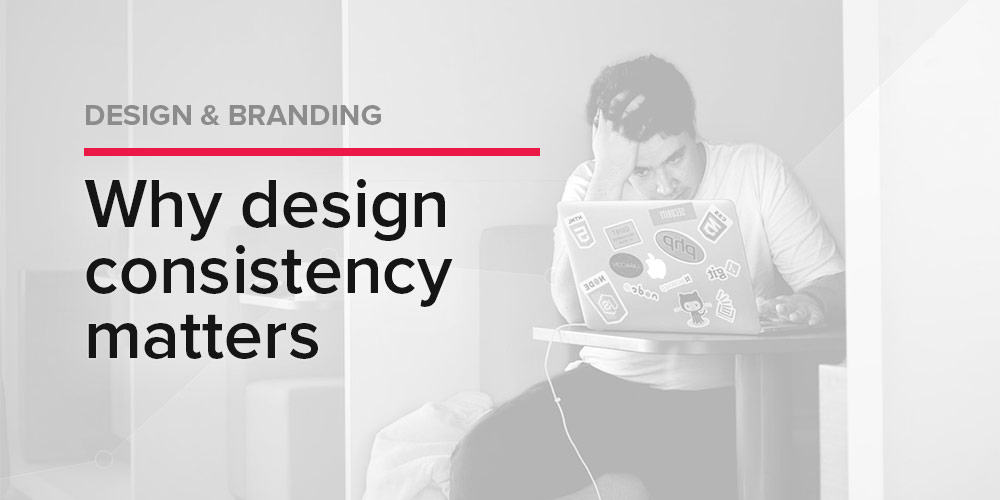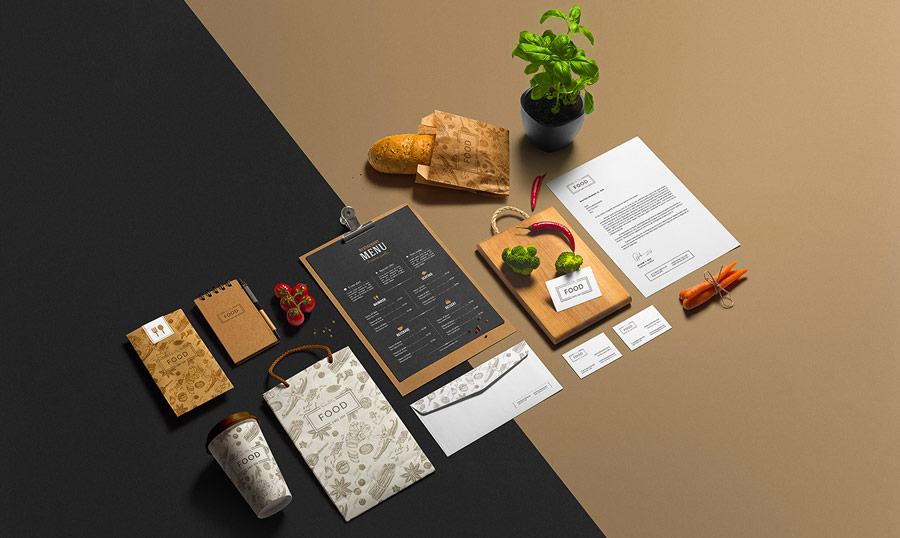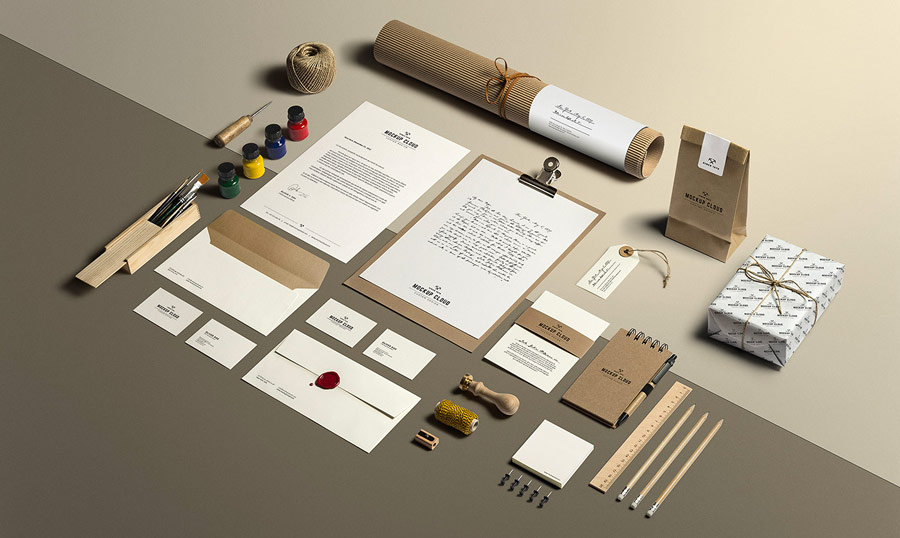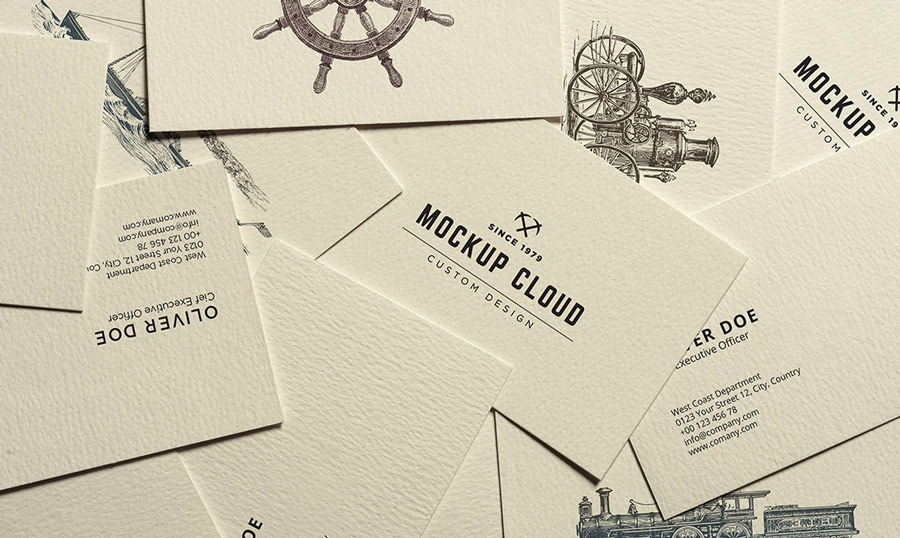Why Design Consistency Matters in Branding

Whether you’re handing out business cards at a conference or creating an advertisement on Instagram, it’s no secret that your branding plays a huge role in how your company is seen by consumers. The design and color scheme of a logo might give you a reason to take a second look or to simply toss a business card in the trash. But no matter the quality of your design, if your branding isn’t consistent across all your channels, your business will suffer.
Let’s say you have a logo that you’re proud of. The design is memorable, the color scheme and font style are eye-catching, and the overall product reflects the values of your business. Sure, this might make a nice first impression on a potential consumer, but unless you’ve made this design synonymous with your brand identity, it won’t be worth much. This is where consistency comes into play as one of the foundational building blocks of your brand identity. But why is consistency important and how can you successfully implement it in your design strategy? Let’s dive right into it.
Content
- What is Brand Consistency?
- The Importance of Brand Design Consistency
- How to Achieve Design Consistency with Your Branding
What is Brand Consistency?
Brand consistency refers to keeping your brand messaging in alignment with a defined identity and core strategy. From a design perspective, this means showcasing the same visual elements (i.e logo, fonts, color scheme) on any channel or message delivered by your brand.
What does this mean? Your brand color palette should be visible on your logo, business cards, websites, and advertisements. The typography should be the same on all of your employees’ email signatures.
The Importance of Brand Design Consistency
Awareness
Brand awareness is all about creating a place for yourself in the minds of your target consumers. The more familiar someone is with your brand, the more likely they are to turn to your business when they need a product or service that you can provide.
Much of the time, awareness begins with an eye-catching logo or color scheme. But in order to be memorable, customers need to keep seeing that design —on social media ads, business cards, your storefront signage — any online or offline channels where your brand makes an appearance. This is how you showcase your identity to the world.
According to a study by Demand Metric:
“consistently-presented brands are 3.5 times more likely to enjoy excellent brand visibility than those with an inconsistent brand presentation”.

Source: Mockup Cloud
Think about some of the brands you love. Target is a favorite among shoppers. The friendly staff, bright colors, and magical aisles make you want to abandon your sanity and empty your bank account in favor of reasonably-priced home goods you never knew you needed. And when it comes to brand consistency, they really do hit the red-and-white bullseye. The bright colors and friendly vibe is evident in all of Target’s marketing, from the website and video advertisements to the store signage and paper circulars. People know the Target logo because it’s everywhere that Target is.
You don’t need to be as big as Target. But customers are going to have a hard time remembering who you are and what you do if you don’t make sure that your logo and colors are the same across all outlets. And if they don’t remember you, they won’t do business with you. They won’t encourage their friends and family to do business with you.
How many potential customers will you lose? Too many.
Authenticity
Authenticity is more than just a fancy word for honesty. Honestly. It’s about ensuring that your brand aligns with the values of your company. This is becoming more important in the social digital landscape where customers have the ability to connect with the humanity behind the branding. They want to purchase brands whose values are genuine, whether it’s taking a stand against climate change or making a commitment to stellar customer service.
Authenticity leads to long-term customer loyalty. But how does your design branding affect your authenticity? Simple. If you decide to change your logo or website design overnight, it creates a sense of instability and dissatisfaction with your own image. If you’re sending out mixed signals, how do you expect your customers to trust that you are who you say you are?
Professionalism
Whether you’re a freelance writer or own a high-end swimwear boutique, professionalism is everything in the business world. When a person purchases a product or service, they trust that they are getting the full value for their investment. A professional brand plays an important role in building and maintaining that trust and dependability.
So where does design consistency come in? Glad you asked. If your logo and visuals are the same on all your online channels and print materials, it shows consumers that you’re invested in your company and separates you from the amateurs.
The most trusted brands in the world like Coca-Cola and Apple have made a commitment to consistent branding. You know the Apple logo and you can see the red and white color scheme in any advertisement Coca-Cola releases. They’re predictable — not predictable in the sense that they’re boring, but that we know what to expect. When money is involved, knowing what to expect means reducing any financial risk.
Your business might not be anywhere near the scale of Coca-Cola or Apple, but that only means it’s even more important to strive for consistency. You haven’t yet built this rapport with your customer base, so once they see that your logo pop up everywhere and they recognize your colors, you’ll be viewed as a professional and not just an amateur toying with the idea of starting a business.
How to Achieve Design Consistency with Your Branding
Create brand guidelines
Every element of your design should be defined in your brand guidelines. This makes it incredibly easy to stay aligned across all your channels.
Brand guidelines should contain:
- Brand mission
- Logo design and any variations
- Fonts and typography
- Color palette
- Imagery styles
- Tone of voice
If you have all of these outlined in one place, you won’t be tempted to scramble for any quick fixes when you need materials printed in a hurry.
Get your entire company on board
Once those brand guidelines are ready, send them out to every person in your company.
Not only is this an essential resource for all departments, but it will also allow you to hold your employees accountable when it comes to maintaining brand consistency.
Keep your on-brand materials accessible
Be sure that your employees have all of the brand materials available to them when they need it. For instance, if your sending a team over to a conference, don’t put them in a position where they have to scramble around last minute to create a business card template.

Source: Mockup Cloud
You should already have a pre-designed template set up with a business card ordering portal like Brandly so that your business cards are professional, consistent, and available when needed. A situation you don’t want is your employees making their own business cards, even if they do have the brand guidelines. Marketing materials are best left to professional designers and printing services.
No matter how small or big your business, make brand consistency a priority across all your online and offline channels. From your business cards to your social media platforms, when your customers are exposed to a consistent design, they are more likely to form a long-term relationship with your brand.
Want more actionable tips to help take your branding, design, and marketing knowhow to the next level? Subscribe to our newsletter—delivered straight to your inbox once a month.
